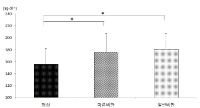Purpose Highly popular these days, eSport is inviting increasing scholarly attention and research. Scholarly work on eSport, however, remains focused on whether eSport is a “real” sport, that is, its sporting qualities and status, excluding ethical issues. This paper analyzes ethical issues about cognitive enhancement drugs often associated with eSport in order to suggest guidelines for resolving these issues. Methods First, environmental features of eSport are examined to find out types of cheating in eSport, as well as the ways eSport athletes are exposed to drugs. Next, ethical issues of cognitive enhancement drug use and why they are important are discussed, drawing upon multiple scholars. Last, this paper argues that the ban on drug use conventionally implemented in sport is not appropriate to eSport due to the characteristics of eSport. The paper concludes with possible future approaches to this issue. Results The ban lists administered by ESIC and WADA would not work for the need of eSport athletes and even run a risk of stunting the growth of eSport industries. It is thus important to think up an appropriate drug-related policy for eSport. Preemptive education for eSport athletes is also required to promote the ethical consciousness and judgment regarding drug use. Conclusions Insofar as eSport’s huge popularity leads to the increased status of eSport athletes, thereby exerting much influence on young people, ethical questions about eSport, drug use in particular, need to be urgently discussed for the sake of eSport’s wholesome development.
PURPOSE This study aimed to examine the associations between accelerometer-measured physical activity and both cardiometabolic disease risk factors and metabolic syndrome in Korean adults. METHODS We performed a retrospective cohort study with age-sex matched case-control using data from the 2014-2016 Korea National Health and Nutrition Examination Survey, which was administered to South Korean adults (n=320). Individuals were categorized into quartiles based on accelerometer-measured moderate-to-vigorous physical activity (MVPA). Demographic and physical characteristics, waist circumference, visceral adiposity index, blood pressure, lipid profiles, and TG/HDL-C were observed. The associations between MVPA status and cardiometabolic disease risk factors as well as metabolic syndrome were determined using multiple logistic regression. RESULTS For the waist circumference, SBP, DBP, MBP, visceral adiposity, triglyceride, and a surrogate estimate of insulin resistance, the Q1 and Q2 groups had higher means compared with the Q3 and Q4 groups. HDL-C was higher in the Q3 and Q4 groups compared to the Q1 and Q2 groups. Odds ratios for cardiometabolic disease risk factors and metabolic syndrome decreased in a curvilinear manner with the increasing quartile of MVPA. CONCLUSIONS Adults with higher MVPA participation were strongly associated with cardiometabolic disease risk factors and metabolic syndrome.

This study was designed to compare physical fitness, blood lipids, and insulin resistance according to body mass index (BMI) and percent body fat (%BF) in 20s females. Sixty women, aged 20-29 yrs, volunteered to participate in the study as subjects. There were three groups, i.e., normal group (BMI < 24 kg·m-2 and %BF < 25%; n = 25), normal weight obese group (BMI < 24 kg·m-2 and 28% < %BF < 40%; n = 22), and obese group (BMI > 26 kg·m-2 and 30% < %BF < 40%; n = 13). Physical fitness, blood lipid profiles, and surrogate indices of insulin resistance were measured and compared among three groups. Main results of the present study were as follows: 1) There were significant differences in all variables regarding body composition among three groups. All values were lowest in normal group and highest in obese group. 2) There was significant difference in sit-and-reach among three groups, whereas no significant differences were found in other variables regarding physical fitness among three groups. 3) There were significant differences in all variables regarding blood lipids among three groups. In particular, total cholesterol (TC), low density lipoprotein cholesterol (LDL-C), TC/HDL-C ratio, and LDL-C/HDL-C ratio were significantly higher in normal weight obese group than normal group. 4) There were significant differences in all variables regarding insulin resistance among three groups. Fasting plasma glucose and HOMA-IR were lowest in normal group and highest in obese group. It was concluded that there would be abnormal blood lipid profiles and insulin resistance in even normal weight obese individuals as well as general obese individuals in 20s females.

